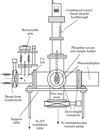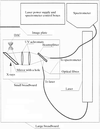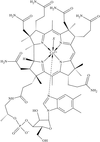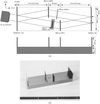issue contents
July 2000 issue

Cover illustration: A view inside the hutch of the crystallography beamline I711 at MAX II, see Cerenius, Ståhl, Svensson, Ursby, Oskarsson, Albertsson and Liljas, pages 203-208.
facility information
research papers
A new X-ray crystallographic beamline is operational at the MAX II synchrotron in Lund. The beamline is used both for macro- and small molecule diffraction as well as powder diffraction experiments.
The effect of the surface roughness of optical elements, such as Be windows and reflection mirrors, in synchrotron radiation beamlines on the spatial coherence of the X-ray beam is investigated systematically by means of digital simulation, in which a new model for X-ray reflection from a rough surface is proposed.
The efficiency of Y3Al5O12:Ce phosphor powder screens in the VUV and soft X-ray regions is reported. Also, a custom-built camera for making measurements in forward and backward modes is described.
A prototype X-ray detector, based on silicon microstrip technology, has been developed for energy-dispersive EXAFS studies and tested at the UK Synchrotron Radiation Source (SRS).
Instrumentation for time-resolved diffraction studies of transient photoinduced species is described. Equations are given for the maximum and average fractional excited-state populations as a function of lifetime, pulse frequency and efficiency of excitation.
Wavelength normalization of Laue X-ray diffraction data obtained using insertion devices is presented. Reproducibility and accuracy of the data-derived spectra are discussed for sources with complex spectra, such as wiggler/undulator tandems and single-line undulators.
A microdeformation device has been constructed and used to collect force/strain and micro-SAXS data in real time from single struts of an elastomeric polyurethane foam.
A total of 40 high-quality powder patterns on a manganate perovskite (Nd0.43Sr0.57MnO3) in the temperature range 105–200 K were obtained in less than 2 h by making use of synchrotron radiation and an area detector equipped with online readout capabilities. The data made possible a detailed study of the temperature dependence of the structural changes taking place in this material.
An experimental facility for combined high-pressure EXAFS, X-ray diffraction and photoluminescence is described.
How to use the classical statistical tools to estimate statistical errors on EXAFS and its Fourier transform.
B12 cofactors can be photoreduced by X-rays when their cobalt centre is coordinated by an inorganic ligand (water or cyanide), but not when it carries an organometallic `upper' ligand. This could be demonstrated by X-ray absorption spectroscopy.
A new experimental technique for reciprocal X-ray holography has been developed. The experimental set-up makes it possible to measure a reciprocal hologram without unwanted mixture of the X-ray fluorescence holography signal.
short communications
A large monolithic X-ray interferometer having a view size of width 25 mm and height 15 mm has been fabricated to observe large objects in phase-contrast X-ray imaging.
computer programs
A computer program for X-ray absorption spectroscopic data acquisition is described, including the program architecture, basic operation and graphical user interface.


 journal menu
journal menu


































